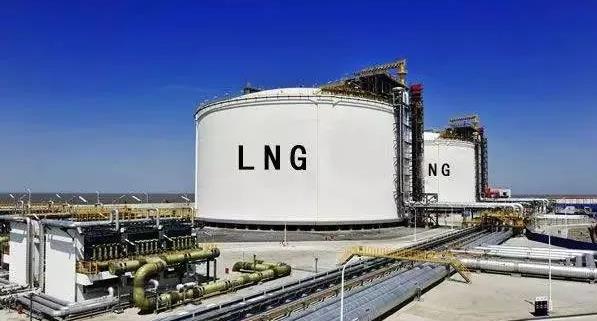1. Overview
As a low-carbon and clean energy, liquefied natural gas (LNG for short) has the dual characteristics of environmental protection and good economy. LNG has become the main gas source or transitional gas source for cities that currently cannot use pipeline natural gas to supply gas, and it is also the supplementary gas source or peak-shaving gas source for many cities that use pipeline natural gas to supply gas. LNG gasification station is a satellite station for receiving, storing and distributing LNG, and it is also an intermediate adjustment place for towns or gas companies to transfer LNG from manufacturers to users. With the advantages of short construction period and the ability to quickly meet the needs of the gas market, LNG gasification stations have been gradually built in many small and medium-sized cities in the southeast coast of my country with developed economies and energy shortages, becoming permanent gas supply facilities or transition before the arrival of pipeline natural gas. Gas supply facility .
The process design scope of LNG gasification station includes LNG unloading, storage pressurization, gasification heating, BOG treatment, safety discharge, pressure regulation and metering, odorization, etc. The LNG unloading link, that is, liquefied natural gas (LNG) is stored in tank containers, transported to the gasification station by road tankers, and pressurized by the unloading supercharger on the unloading platform, and the LNG is sent to the low-temperature LNG storage tank by the pressure difference. Since LNG unloading is carried out continuously in a certain period of time, and involves drivers and passengers, station management personnel, etc., which is closely related to the safe operation of the gasification station, the safety consideration of the unloading point of LNG tankers in the design should arouse the attention of the majority of engineering designers. enough attention.
2 LNG hazard analysis
2.1 Physical and chemical properties of LNG
The storage temperature of LNG is usually between 166°C and 157°C, and the density is between 430kg/m3 and 470kg/m3. Since LNG is a liquid cryogenic light hydrocarbon, the water vapor in the air will be released in places where leakage or overflow occurs. Condenses to produce white vapor clouds. In the process of LNG storage and transfer, BOG gas will be generated after heat leakage. Its composition depends on the composition of the liquid. Generally, the boil-off gas contains 20% nitrogen, 80% methane and a trace amount of ethane. The nitrogen content It can reach 20 times the nitrogen content in LNG liquid .
LNG has flammable and explosive characteristics. Under the low temperature of 162 °C, its combustion range is 6% to 13% by volume. The ignition temperature of LNG changes with the change of components, and the increase of heavy hydrocarbon content will cause ignition. The decrease in temperature, under the condition of atmospheric pressure, the ignition temperature of pure methane is 650 ℃.
Under normal temperature and pressure, LNG gasifies and becomes a gaseous form, that is, natural gas. Natural gas is a multi-component mixture, the main component is alkane, contains a small amount of carbon dioxide, nitrogen and water vapor, and trace amounts of helium, argon and other rare gases . According to the fire hazard classification of “Code for Fire Protection of Petroleum and Natural Gas Engineering Design”, the fire hazard level of natural gas is Class A and B.
2.2 Dangers of LNG
In the unloading process of the LNG tanker, once an accident occurs, the LNG leaks, and the LNG diffuses into the normal temperature and pressure environment, and then becomes a gaseous form. Therefore, the hazards of natural gas and LNG should be considered in engineering design.
(1) Flammable and explosive. Natural gas is a flammable and explosive gas, and it can form an explosive mixture when it leaks into the air, and it will burn as long as the temperature reaches 550 °C. In case of high heat, the internal pressure of the container will increase, and there is a danger of cracking and explosion. The explosion limit of natural gas is 5% to 15%. The natural gas in the container and pipeline leaks into the atmosphere. When its concentration reaches the explosion limit, it will burn or explode when it encounters a fire source. When the natural gas concentration is lower than the lower limit, it neither explodes nor burns when it encounters a fire source . When the natural gas concentration is high When the upper limit is reached, it will not explode when encountering a fire source, but can burn.
(2) Easy diffusion. Natural gas is volatile and less dense than air, so it is not easy to stay in low-lying places after leakage, and has strong diffusivity.
(3) Toxicity. Natural gas is a hydrocarbon mixture that is colorless, odorless, and nontoxic, but long-term exposure can cause neurasthenic syndrome. Methane is a “single-sex asphyxiating” gas. When the concentration is too high, the oxygen content in the air can be significantly reduced, causing suffocation. When the methane in the air reaches 25% to 30%, it can cause headache, dizziness, fatigue, inability to concentrate, etc.
(4) Thermal expansion. The volume of natural gas will expand with the increase of temperature. When the pipeline is exposed to sunlight or close to a high-temperature heat source, the natural gas expands due to heat and expansion, causing the internal pressure of the pipeline to increase and expand, resulting in damage to the container and leakage of natural gas.
(5) Low temperature and supercooling of LNG. The storage temperature of LNG is -162 ℃. After the leakage occurs, the jet or cold vapor cloud will make some materials in contact with it become brittle, fragile, or cause cold shrinkage, resulting in damage to pipes, welds, and pipe fittings and leakage. Supercooled liquid or gas will cause low temperature burns, frostbite and other hazards to the human body.
Contact us:
Sichuan Rongteng Automation Equipment Co., Ltd.
www. rtgastreat.com
E-mail: sales01@rtgastreat.com
Phone/whatsapp: +86 138 8076 0589
Post time: Sep-10-2022



